CMMS for Construction Equipment Maintenance
Ensuring Success for Your Construction Projects
No credit card required | Start your 30 day FREE trial

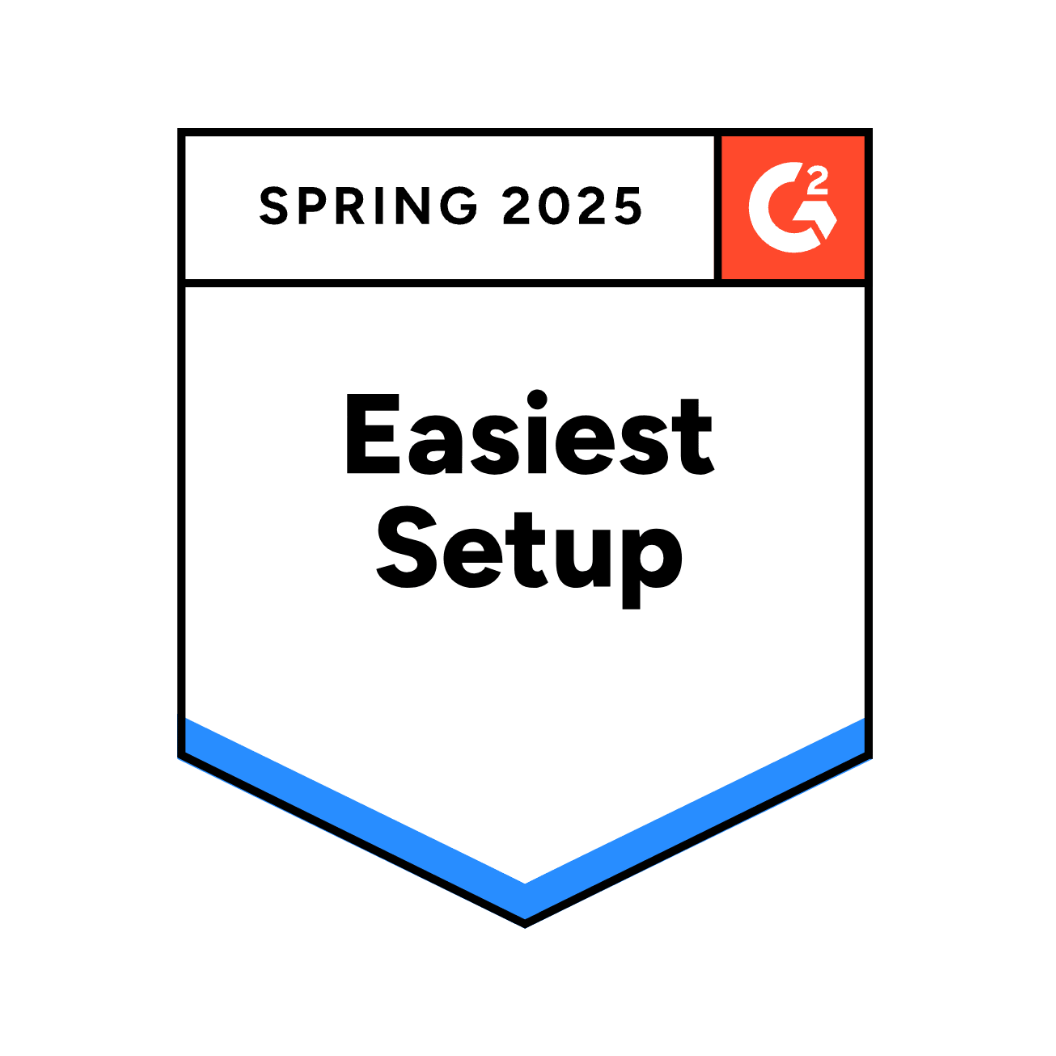
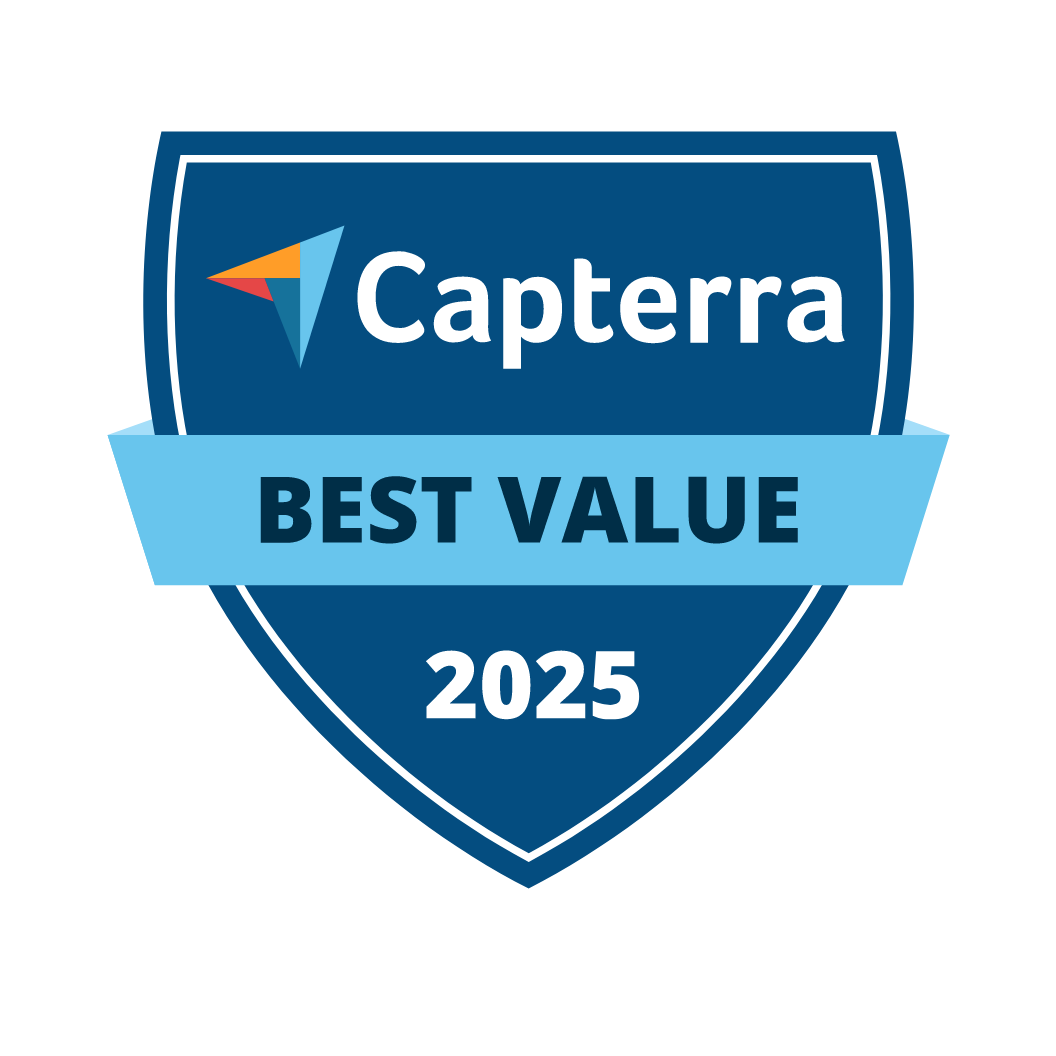
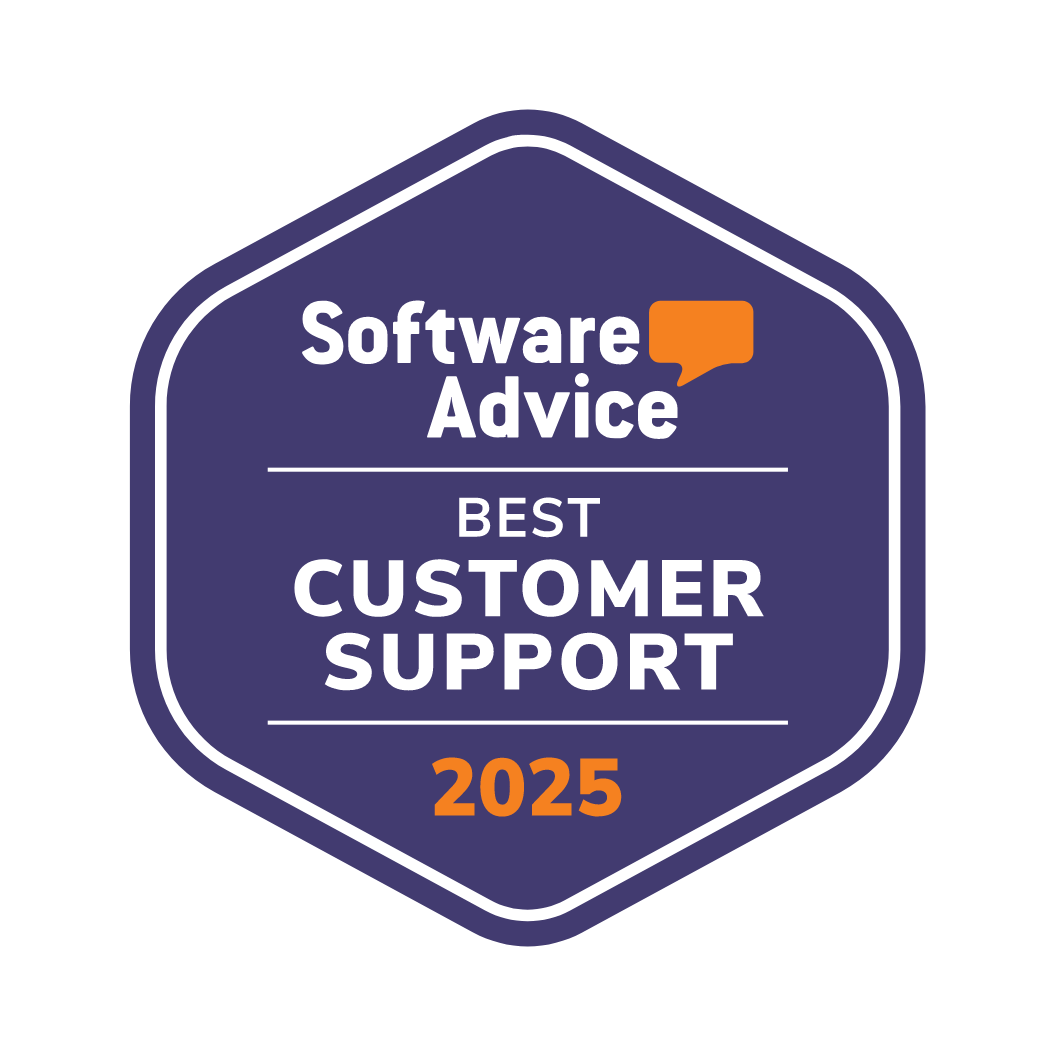
- CMMS
- Industry
- CMMS for Construction Equipment Maintenance
Labor Efficiency Improvement
Estimated Downtime Reduction
Inventory Optimization
Trusted by thousands of maintenance & facilities professionals
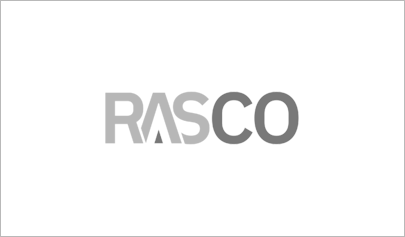
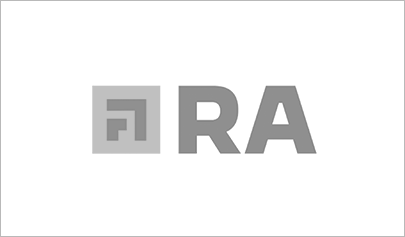
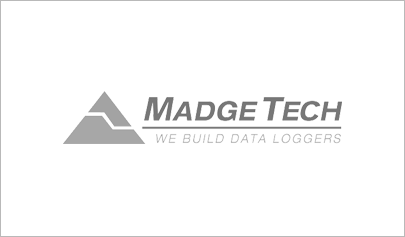
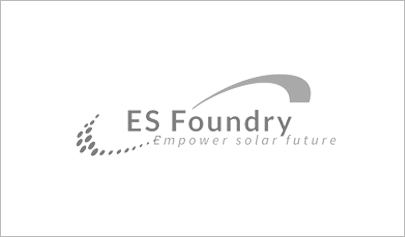
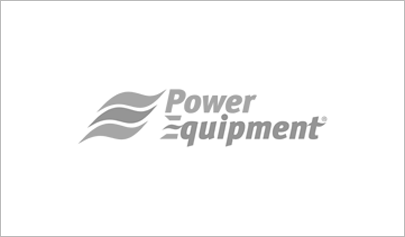
TABLE OF CONTENTS
Importance of Maintenance in Construction Projects
Maintenance plays a key role throughout the lifecycle of construction projects, from initial planning and construction to ongoing operation and maintenance. Proper maintenance of equipment, machinery, and facilities is essential for ensuring project continuity, minimizing downtime, and preserving asset value. Preventive maintenance practices, such as routine inspections, lubrication, and repairs, help identify and address potential issues before they escalate into costly breakdowns. Effective maintenance planning and execution contribute to project efficiency, safety, and sustainability, ultimately enhancing project outcomes and client satisfaction.
How much does Click Maint cost?
Try our Price Calculator to get an Instant Estimate for Your Use Case
PROFESSIONAL PLAN
$ 42 USD
PER USER PER MONTH
$ 35 USD
PER USER PER MONTH

Construction Maintenance Pain Points
Managing Wear and Tear of Heavy Machinery
Ensuring Compliance with Safety and Regulatory Standards
Minimizing Downtime of Equipment and Tools
Coordinating Maintenance Across Multiple Project Sites
Addressing Environmental and Weather-Related Challenges
Balancing Maintenance Costs with Project Budgets and Timelines
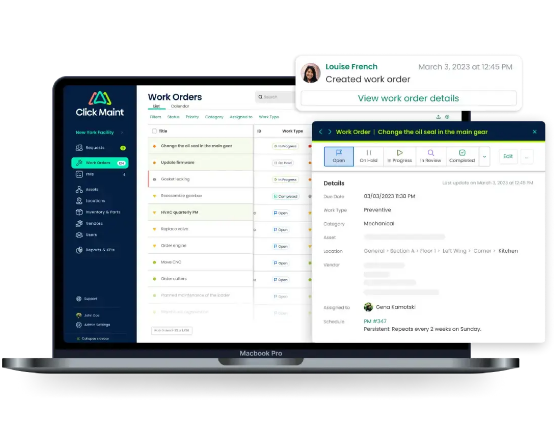
How CMMS Solves these Challenges
Automated work order management
Asset downtime tracking
Maintenance history reporting
Labor and cost tracking
Inventory management and optimization
Automated preventive maintenance scheduling
Case Studies

Southern Carton
Quick and Seamless CMMS adoption
“Click Maint was the missing link to our maintenance department, from tracking to giving the maintenance team the insight of what to expect before they get to a breakdown.”

John McClenney
Southern Carton

MOKO Home & Living
Streamlining Maintenance Operations with Click Maint CMMS
“Click Maint has streamlined our maintenance operations by simplifying daily tasks and improving team coordination. Its ease of use and accessibility have enhanced efficiency, reduced administrative workload, and delivered time and cost savings across our maintenance activities.”

Eileen Wainaina
Director of Manufacturing and Operations

Gracious Living
Transforming Maintenance Operations with Click Maint CMMS
“We thoroughly enjoy using Click Maint, its ease of use and good customer service have left us in a better position to manage and tackle PM's and work orders”

Sharef Omar
Property & Infrastructure Manager
Click Maint CMMS Features for Construction Equipment Maintenance
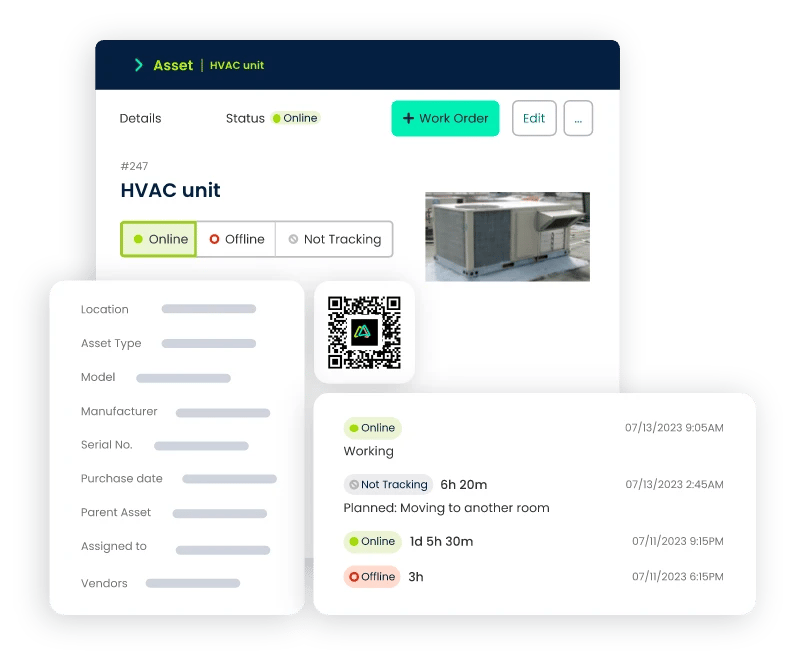
Asset Management
- Track and manage all construction assets efficiently, including equipment, machinery, vehicles, and tools.
- Assign unique identifiers and track location, status, and maintenance history of each asset.
- Schedule routine inspections, maintenance tasks, and repairs to optimize asset lifespan and performance.
- Generate reports on asset utilization, downtime, and maintenance costs for informed decision-making.
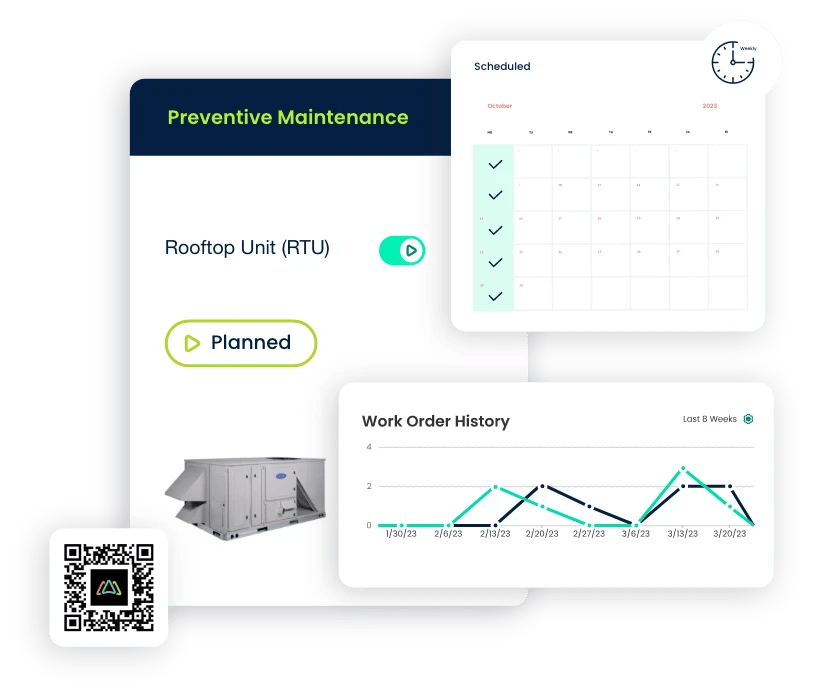
Preventive Maintenance Scheduling
- Create and manage preventive maintenance schedules for all equipment and machinery used in construction projects.
- Define maintenance tasks, frequencies, and associated checklists to ensure compliance with safety and regulatory standards.
- Receive automated alerts and notifications for upcoming maintenance tasks to minimize downtime and disruptions.
- Analyze historical maintenance data to optimize preventive maintenance schedules and improve asset reliability.
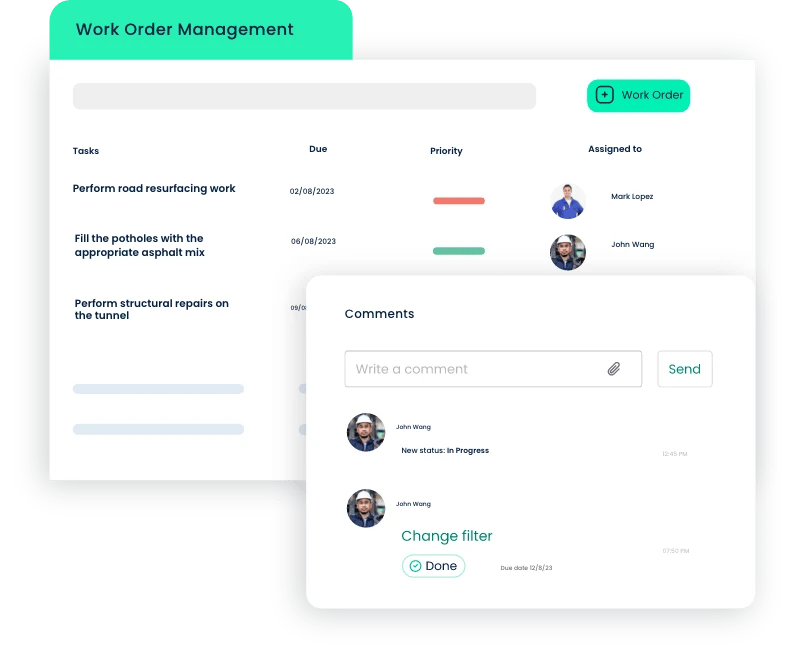
Work Order Management
- Streamline the process of generating, assigning, and tracking work orders for maintenance activities.
- Capture detailed information such as work description, priority level, required parts, and estimated labor hours.
- Assign work orders to specific technicians or contractors based on skill set, availability, and workload.
- Monitor work order progress in real-time, track labor hours, and update status to ensure timely completion.
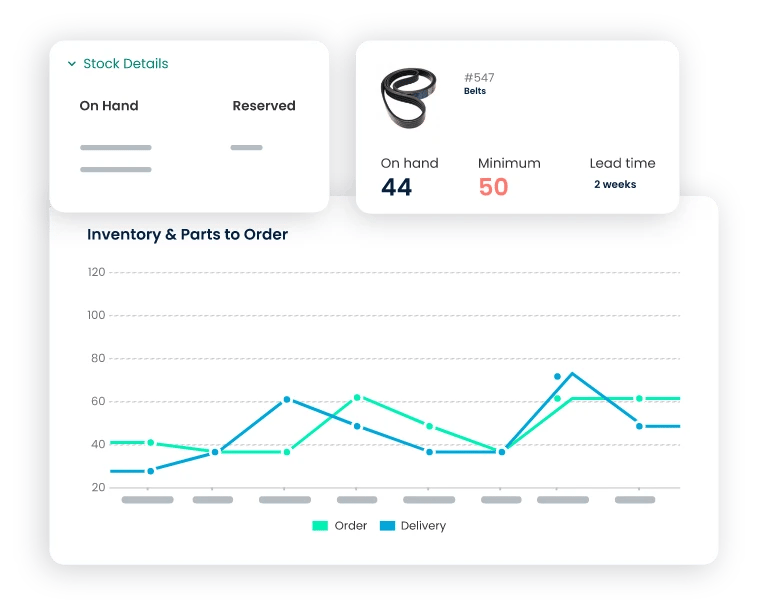
Inventory Management
- Manage construction-related inventory, including spare parts, consumables, and supplies, in a centralized database.
- Set reorder points and automatic replenishment triggers to prevent stockouts and ensure availability of critical items.
- Track inventory usage, consumption rates, and costs associated with maintenance and repair activities.
- Integrate with procurement systems for seamless purchasing and inventory replenishment processes.
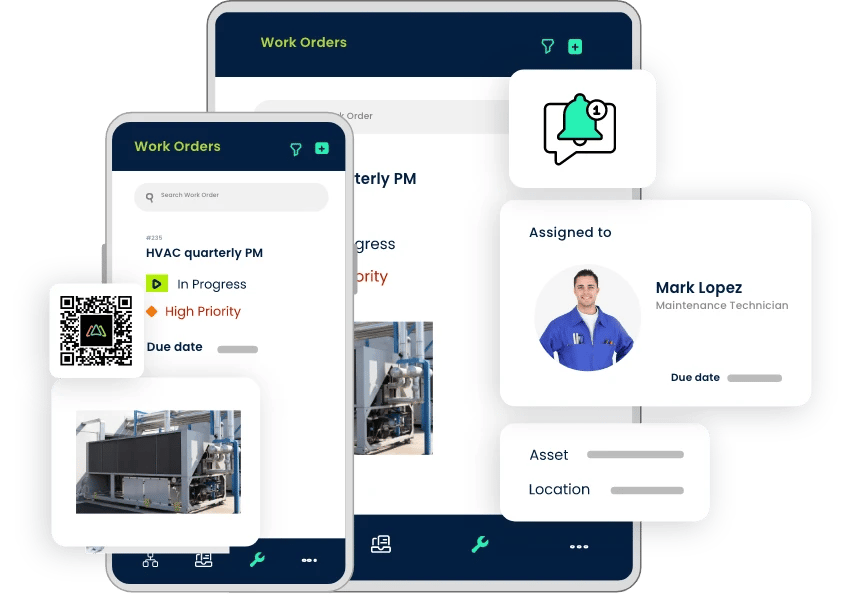
Mobile Accessibility
- Access CMMS software on mobile devices such as smartphones and tablets for on-the-go maintenance management.
- Enable field technicians to receive work orders, update task status, and record maintenance activities in real-time.
- Capture photos, videos, and notes directly from the field to provide comprehensive documentation of maintenance tasks.
- Enhance collaboration between onsite and offsite teams by facilitating instant communication and information sharing.
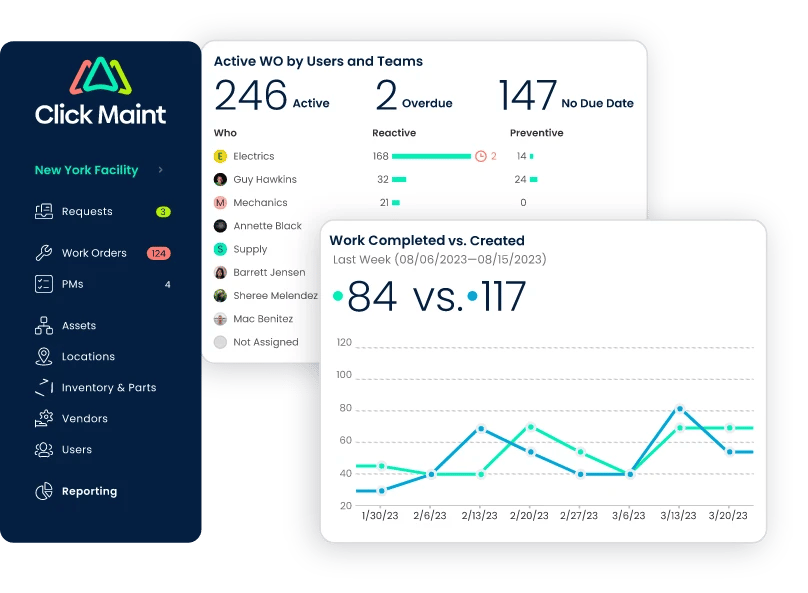
Reporting and Analytics
- Generate customizable reports and dashboards to gain insights into maintenance performance and asset health.
- Analyze key performance indicators (KPIs) such as equipment uptime, maintenance costs, and mean time between failure (MTBF).
- Identify trends, patterns, and potential issues through advanced analytics and data visualization tools.
- Make data-driven decisions to optimize maintenance strategies, allocate resources efficiently, and improve overall operational efficiency.
Experience Click Maint CMMS now
30-Day Free Trial
No Credit Card needed.
Instant access to all features & modules with an optional live walk-through with a Click Maint expert
Book a live Demo
In this 30-minute demo, see firsthand how our easy CMMS can streamline your operations, enhance productivity, and reduce downtime.
Key Challenges Faced by Construction Companies
Construction companies encounter several challenges that impact project timelines, budgets, and overall success. These challenges include:
Project Delays
Unforeseen delays due to poor weather conditions, material shortages, labor issues, regulatory hurdles, or design changes can disrupt project schedules and increase costs.
Cost Overruns
Budget overruns are common in construction projects, often resulting from inaccurate cost estimates, scope changes, unexpected cost of material increase or unexpected expenses.
Safety Concerns
Construction sites pose inherent safety risks, and ensuring worker safety is a top priority. Failure to implement adequate safety measures can lead to accidents, injuries, and legal liabilities.
Resource Management
Efficient allocation of resources, including labor, equipment, and materials, is essential for optimizing project performance and minimizing waste.
Asset Maintenance
Construction companies rely heavily on equipment and machinery to execute projects. Maintaining these assets in optimal condition is critical to avoid downtime, maximize productivity, and prolong asset lifespan.
See how affordable Click Maint CMMS is
Evolution of CMMS in the Construction Industry
The evolution of CMMS in the construction industry marks a significant shift in how maintenance tasks are managed and executed within construction projects. Here's a brief overview of the transformation maintenance processes in the construction industry as a result of CMMS software.
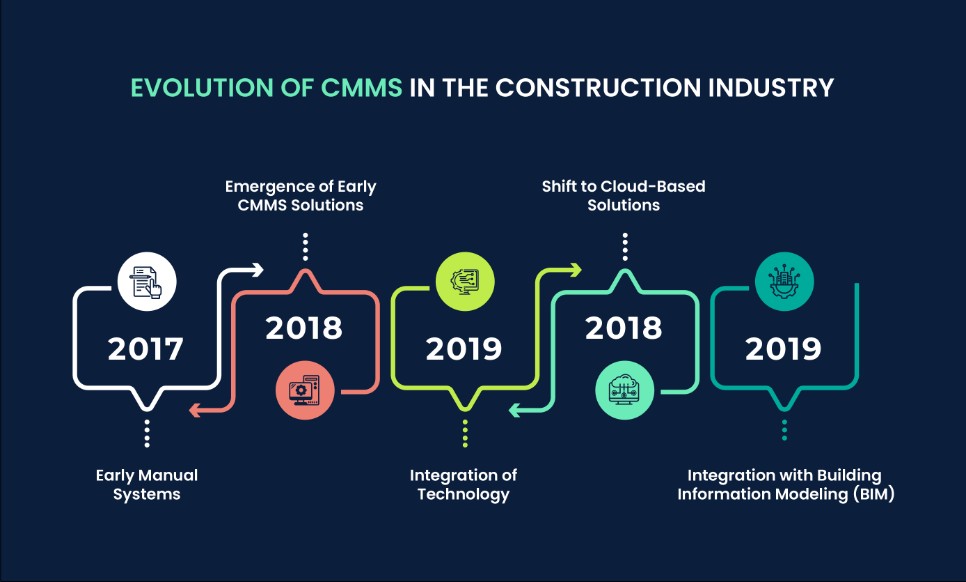
Early Manual Systems
Historically, maintenance management within the construction industry relied heavily on manual processes, such as paper-based work orders, spreadsheets, and physical logs. While these methods were sufficient for basic maintenance tracking, they lacked efficiency, scalability, and real-time visibility into equipment health. (BTW, many construction companies still operate their maintenance processes using manual methods.)
Emergence of Early CMMS Solutions
In the late 20th century, Computerized Maintenance Management Systems (CMMS) began to gain traction as construction companies sought more sophisticated tools to manage maintenance activities. Early CMMS solutions offered basic functionalities, such as work order management, asset tracking, and maintenance scheduling, paving the way for more advanced systems to come. These early CMMS systems tended to be on-prem, accessed from desktops and lacked mobility.
Integration of Technology
With advancements in technology, CMMS solutions evolved to incorporate features such as predictive maintenance, mobile accessibility, cloud-based platforms, and integration with IoT (Internet of Things) devices. These innovations revolutionized maintenance management within the construction industry, enabling real-time monitoring of equipment, predictive analytics, and data-driven decision-making.
Shift to Cloud-Based Solutions
In recent years, there has been a notable shift towards cloud-based CMMS solutions within the construction industry. Cloud-based CMMS offers scalability, accessibility, and flexibility, allowing construction companies to manage maintenance operations from anywhere, at any time, using web-based platforms or mobile applications. Cloud-based CMMS require lower upfront costs, include customer support throughpout the subscription, and are hosted, maintained and updated by the software provider as opposed to the company’s internal IT staff.
Integration with Building Information Modeling (BIM)
The integration of CMMS with Building Information Modeling (BIM) technology has further enhanced maintenance management within the construction sector. BIM-enabled CMMS solutions provide comprehensive asset information, maintenance history, and spatial data, enabling more efficient maintenance planning and execution.
Advantages of Implementing CMMS in Construction Projects
Implementing CMMS software in construction projects offers numerous advantages, including:
Improved Equipment Reliability
CMMS enables construction companies to implement preventive maintenance programs, reducing equipment breakdowns and increasing reliability.
Reduced Downtime
By scheduling maintenance proactively and identifying potential issues early, CMMS helps minimize equipment downtime, keeping construction projects on schedule.
Cost Savings
Preventive maintenance and optimized asset management provided by CMMS help reduce repair costs, extend equipment lifespan, and minimize unexpected expenses associated with equipment failures.
Enhanced Safety
Regular maintenance of construction equipment ensures safe operating conditions, reducing the risk of accidents and injuries on the job site.
Efficient Resource Allocation
CMMS provides insights into equipment usage, maintenance history, and performance metrics, allowing construction companies to allocate resources more efficiently and optimize workforce productivity.
Compliance with Regulations
CMMS helps construction companies stay compliant with regulatory requirements by documenting maintenance activities, inspections, and equipment certifications.
Data-Driven Decision-Making
With real-time visibility into maintenance data and equipment health, CMMS enables construction companies to make informed decisions, prioritize maintenance tasks, and allocate resources effectively.
Types of CMMS Software Available for Construction Companies
CMMS software solutions for construction companies vary in features, functionalities, and deployment options. Common types of CMMS software available for construction companies include:
On-Premise CMMS
On-premise CMMS software is installed and hosted locally on the company's servers, providing full control over data management and security. While on-premise solutions offer greater customization and control, they may require significant upfront investment in hardware and IT infrastructure and require ongoing maintenance from internal IT resources. In addition, on premise solutions run the risk of not being updated and becoming obsolete over time.
Cloud-Based CMMS
Cloud-based CMMS solutions are hosted on remote servers and accessed via the internet, offering scalability, accessibility, and flexibility. Cloud-based CMMS eliminates the need for on-site servers and allows users to access maintenance data from anywhere, at any time, using web-based platforms or mobile applications. In addition, hosting, maintenance and software updates are handled by the software provider rather than the internal IT team.
Mobile CMMS Apps
Mobile CMMS applications are designed specifically for use on smartphones and tablets, allowing maintenance technicians to access and update maintenance data while on the go. Mobile CMMS apps provide real-time visibility into equipment status, work orders, and maintenance tasks, enabling field technicians to perform tasks efficiently and accurately. Mobile CMMS apps have the advantage of capturing images, scanning QR codes, GPS tracking, voice to text, push notifications, working offline in dead zones, and many more specific features that are not avalble from desktop versions.
Enterprise CMMS
Enterprise CMMS solutions are designed for large construction companies with complex maintenance requirements and multiple locations. Enterprise CMMS offers advanced features such as multi-site management, asset hierarchy, role-based access control, multiple languages and currencies, asset lifecycle analysis, and integration with other enterprise systems.
Specialized CMMS for Construction
Some CMMS vendors offer specialized solutions tailored specifically for the construction industry. These solutions may include features such as project tracking, equipment rental management, subcontractor management, and integration with construction management software.
Construction Equipment You Can Manage with a CMMS
In the construction industry, a diverse range of equipment is utilized to execute various tasks, from earthmoving and excavation to lifting and material handling. These assets are critical to project success, and effective management is important to ensure their reliability, safety, and optimal performance. Here are some examples of construction equipment that can be effectively managed using a CMMS:
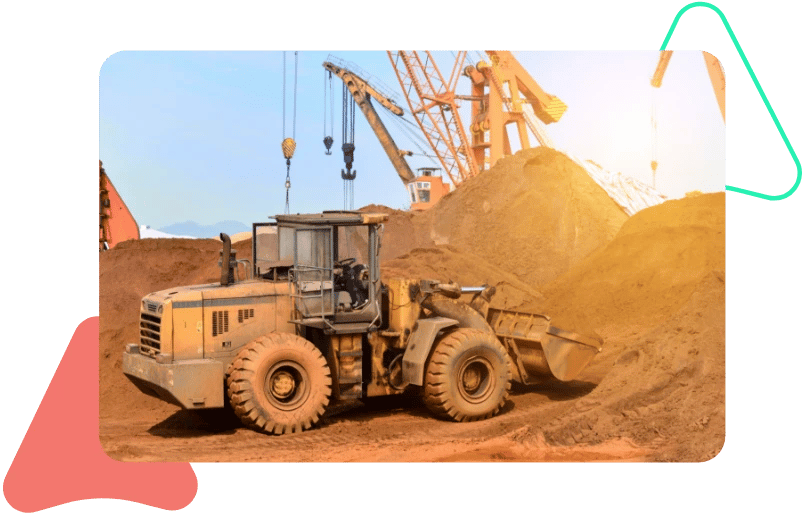
Heavy Machinery
This category includes equipment such as excavators, bulldozers, loaders, and graders, which are essential for earthmoving, site preparation, and grading tasks. With a CMMS, maintenance schedules, inspection checklists, and work orders can be efficiently managed to ensure these machines operate at peak efficiency and safety levels.
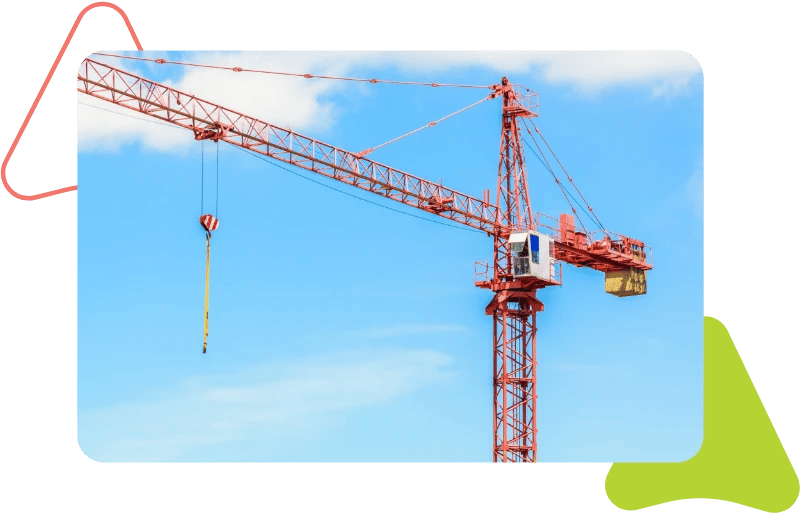
Cranes and Hoists
Cranes and hoists play a vital role in lifting and transporting heavy materials and equipment on construction sites. CMMS software enables proactive maintenance planning, tracking of inspection records, and scheduling of preventive maintenance tasks to ensure the safe and reliable operation of these lifting devices.
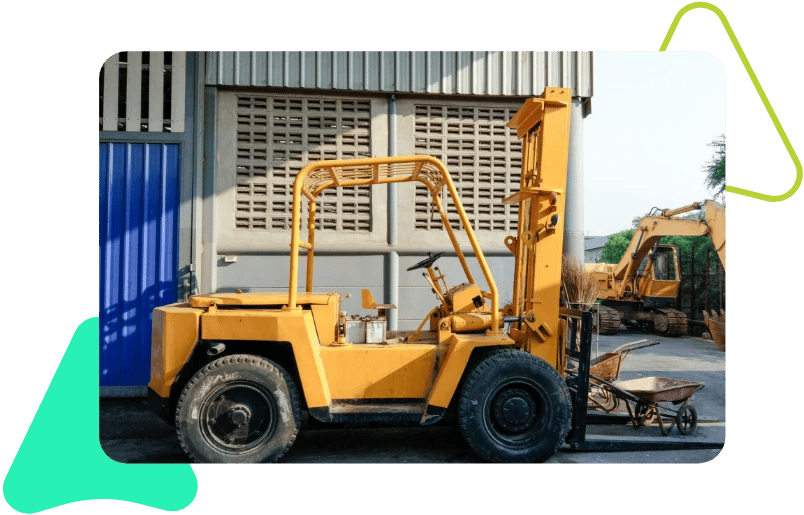
Forklifts and Material Handling Equipment
Forklifts, telehandlers, and other material handling equipment are essential for transporting materials, supplies, and equipment around the construction site. CMMS allows for the tracking of maintenance activities, monitoring of equipment usage, and scheduling of maintenance tasks to minimize downtime and maximize productivity.

Power Tools and Small Equipment
Power tools, such as drills, saws, and grinders, as well as smaller equipment like generators and compressors, are commonly used on construction sites. CMMS facilitates the tracking of maintenance schedules, inventory management of spare parts, and recording of equipment usage to ensure these tools and equipment remain in optimal condition for use.
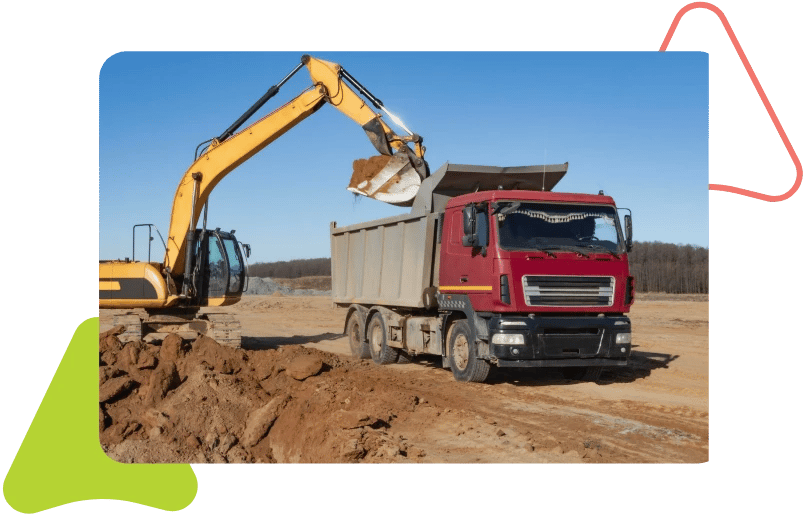
Vehicles and Fleet Management
Construction companies often maintain a fleet of vehicles, including trucks, vans, and specialized vehicles, for transportation and logistics purposes. CMMS software can streamline vehicle maintenance, track fuel consumption, monitor vehicle inspections, and manage service histories to maximize fleet efficiency and minimize operational costs.
How Using a CMMS Makes Managing Complex Construction Equipment and Processes Easy
Utilizing a CMMS offers numerous benefits for managing complex construction equipment and processes, making maintenance operations more streamlined, efficient, and cost-effective:
Centralized Data Management
CMMS software provides a centralized platform for managing all maintenance-related data, including equipment records, maintenance schedules, work orders, and inspection reports. This centralized approach ensures data integrity, eliminates manual record-keeping errors, and facilitates easy access to information for maintenance teams.
Automated Maintenance Scheduling
CMMS enables the automation of preventive maintenance scheduling based on equipment usage, run-time hours, or calendar intervals. By automating maintenance schedules, construction companies can ensure timely servicing of equipment, reduce the risk of unplanned downtime, and extend the lifespan of assets.
Real-Time Monitoring and Alerts
With CMMS, construction companies can monitor equipment health in real-time through sensors and IoT devices connected to the system. Any deviations from normal operating parameters can trigger automated alerts, enabling maintenance teams to respond promptly to potential issues before they escalate into costly breakdowns.
Optimized Inventory Management
CMMS software facilitates efficient inventory management by tracking spare parts, consumables, and maintenance supplies. Construction companies can maintain optimal inventory levels, reduce stockouts and overstocking, and streamline procurement processes to ensure that necessary parts are available when needed for maintenance tasks.
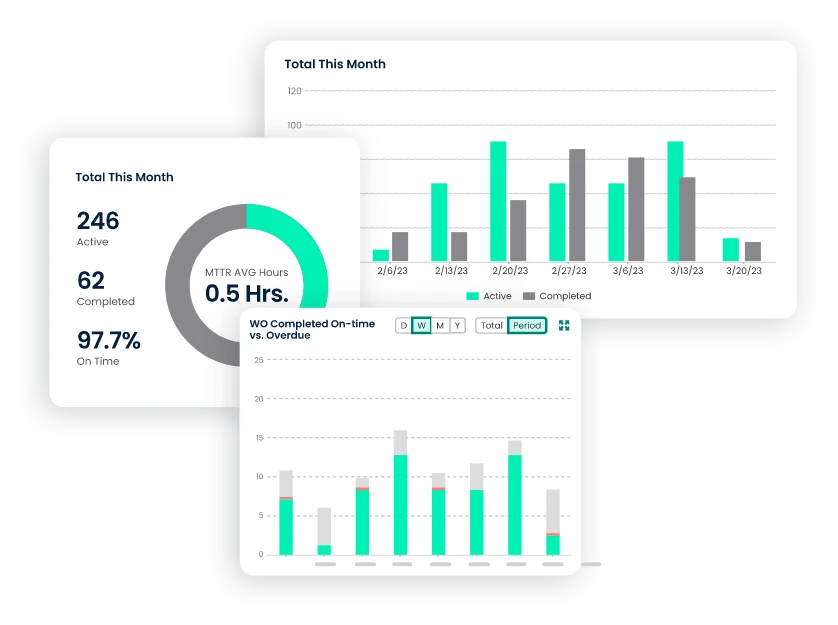
Enhanced Reporting and Analysis
CMMS generates comprehensive reports and analytics on equipment performance, maintenance activities, downtime events, and costs. These insights enable construction companies to identify trends, analyze root causes of failures, and make data-driven decisions to improve maintenance processes, optimize asset performance, and drive continuous improvement.
Mobile Accessibility
Many CMMS solutions offer mobile applications that allow maintenance technicians to access the system remotely from smartphones or tablets. This mobile accessibility enables field technicians to receive work orders, update maintenance records, and access equipment information while on-site, improving communication and efficiency in maintenance operations.
Implementing CMMS in Construction Companies
Implementing a Computerized Maintenance Management System (CMMS) is a strategic initiative for construction companies aiming to streamline maintenance operations and optimize equipment management.
1. Needs Assessment and Goal Setting
The implementation journey begins with a comprehensive needs assessment to identify the specific challenges, pain points, and objectives of the construction company. Conduct interviews with key stakeholders, analyze current maintenance practices, and define clear goals for CMMS implementation. Whether the focus is on reducing downtime, improving asset reliability, or enhancing operational efficiency, aligning CMMS objectives with organizational priorities is important for success.
2. Selection of Appropriate CMMS Software
Once requirements are defined, evaluate and select the most suitable CMMS software solution that meets the unique needs and objectives of the construction company. Consider factors such as functionality, scalability, ease of use, vendor reputation, and pricing. Engage with multiple vendors, request demonstrations, and gather feedback from end-users to make an informed decision.
3. Customization and Configuration
Customize and configure the selected CMMS software to align with the specific workflows, processes, and terminology used in the construction industry. Tailor the system to accommodate unique asset hierarchies, maintenance procedures, and reporting requirements. Work closely with the CMMS vendor or implementation team to ensure that the software meets the company's operational needs and integrates seamlessly with existing systems.
4. Training for Employees
Provide comprehensive training for employees at all levels to ensure proficiency in using the CMMS software effectively. Offer hands-on training sessions, workshops, and online resources to familiarize users with key features, functionalities, and best practices. Empower maintenance technicians, supervisors, and administrators with the knowledge and skills needed to navigate the CMMS interface, input data accurately, and leverage advanced functionalities to optimize maintenance workflows.
5. Data Migration and System Integration
Migrate relevant data from existing systems, spreadsheets, or paper-based records into the CMMS database. Ensure data accuracy, completeness, and consistency throughout the migration process. Integrate the CMMS with other enterprise systems, such as Enterprise Resource Planning (ERP) software or Building Information Modeling (BIM) platforms, to facilitate seamless data exchange and streamline business processes.
6. CMMS Testing and Pilot Phase
Conduct thorough testing and validation of the CMMS software in a controlled environment before full-scale deployment. Create a pilot group of users to evaluate system functionality, identify any issues or discrepancies, and gather feedback on usability and performance. Iterate and refine the system based on user input and testing results to address any concerns and ensure a smooth transition to production.
7. Full-Scale Implementation and Ongoing Support
Once testing is complete, roll out the CMMS software to all users across the organization. Provide ongoing support and assistance to users during the initial transition period to address any questions, concerns, or technical issues. Establish regular communication channels, user forums, and helpdesk support to facilitate continuous learning and problem resolution. Monitor system usage, gather user feedback, and make adjustments as needed to optimize system performance and maximize user satisfaction.
Best Practices for Utilizing CMMS Software in Construction
To leverage the full potential of Computerized Maintenance Management System (CMMS) software in the construction industry, adopting best practices is essential. Here are key strategies to optimize CMMS usage for enhanced maintenance operations and improved project outcomes:
Regular Data Maintenance and Updates
Maintain data integrity and accuracy within the CMMS by conducting regular audits and updates. Ensure that asset information, maintenance schedules, inventory records, and work orders are up-to-date and reflective of current conditions. Implement processes for data validation, cleansing, and synchronization to prevent discrepancies and ensure the reliability of information used for decision-making.
Standardization of Processes and Workflows
Standardize maintenance processes and workflows across the organization to promote consistency, efficiency, and accountability. Establish standardized procedures for asset inspections, preventive maintenance tasks, work order management, and reporting within the CMMS. Document best practices, guidelines, and standard operating procedures (SOPs) to guide users and ensure adherence to established protocols.
Collaboration Between Maintenance and Project Management Teams
Facilitate collaboration and communication between maintenance teams and project management stakeholders to align maintenance activities with project timelines and objectives. Integrate CMMS data with project management tools and scheduling software to coordinate maintenance tasks with construction activities. Foster cross-functional collaboration to prioritize maintenance activities, allocate resources effectively, and minimize disruptions to project schedules.
Continuous Evaluation and Optimization of CMMS Usage
Regularly evaluate CMMS usage and performance metrics to identify areas for improvement and optimization. Gather feedback from users, analyze key performance indicators (KPIs), and conduct periodic reviews to assess the effectiveness of CMMS workflows and processes. Identify opportunities for streamlining workflows, enhancing user experience, and maximizing the ROI of CMMS investment. Continuously evolve and adapt CMMS usage based on lessons learned, industry best practices, and technological advancements to stay ahead of evolving maintenance challenges.


